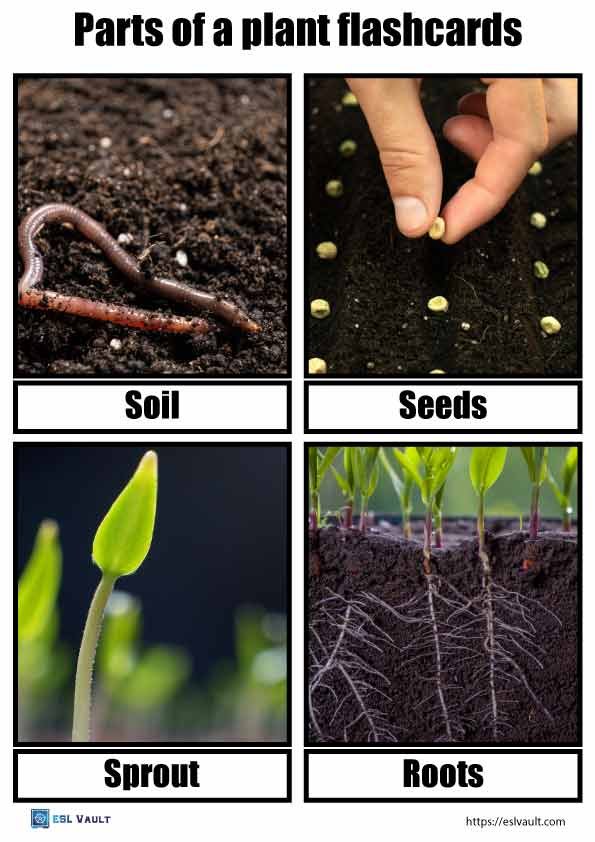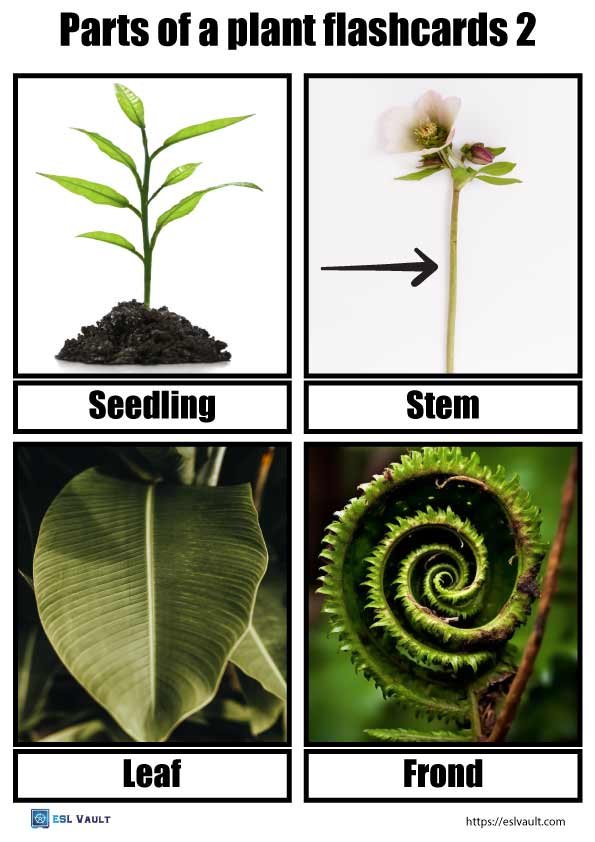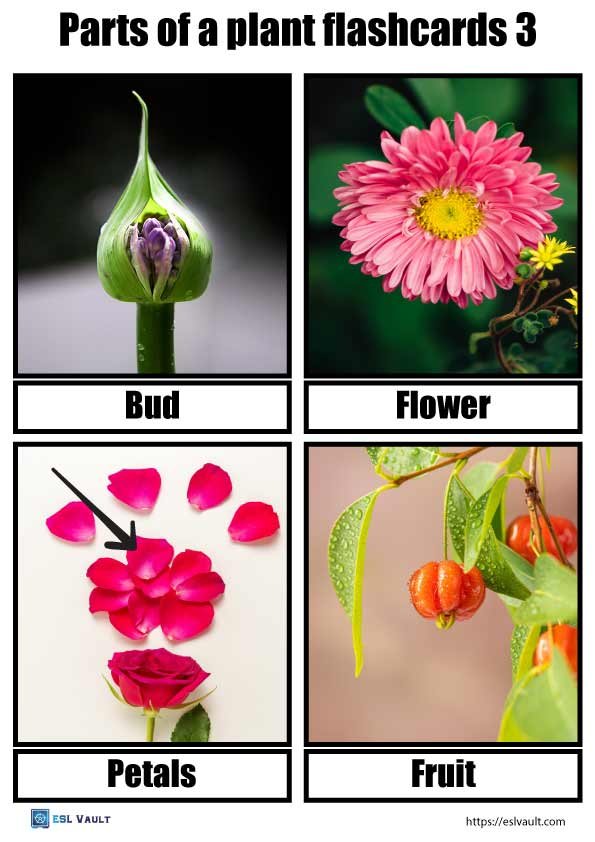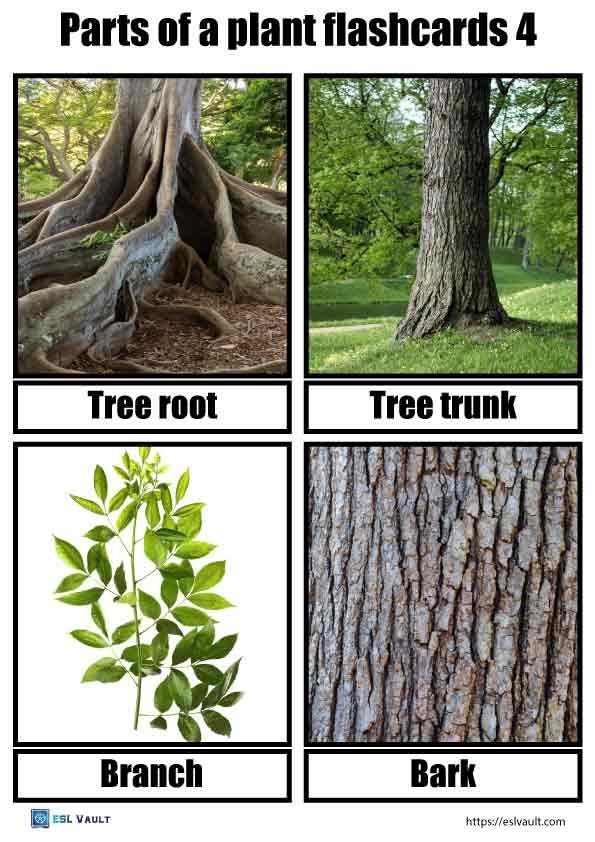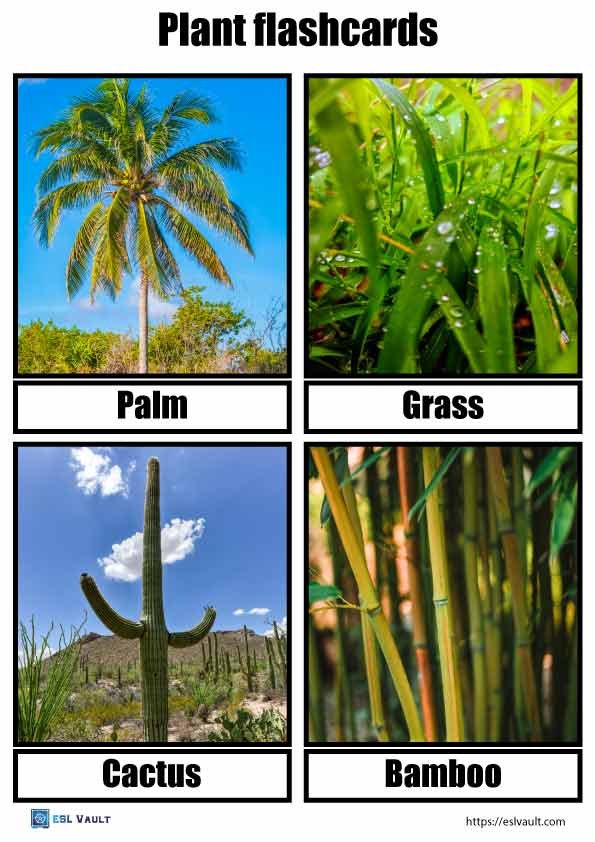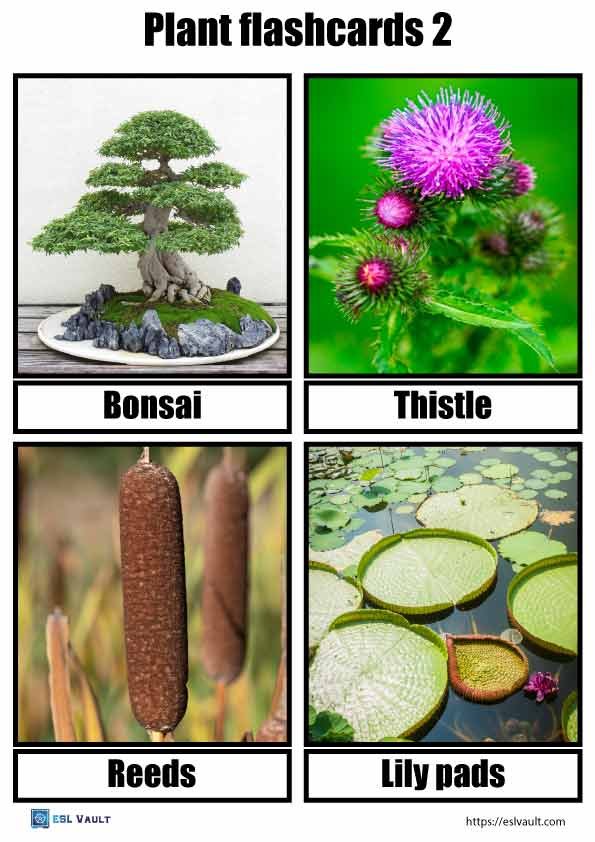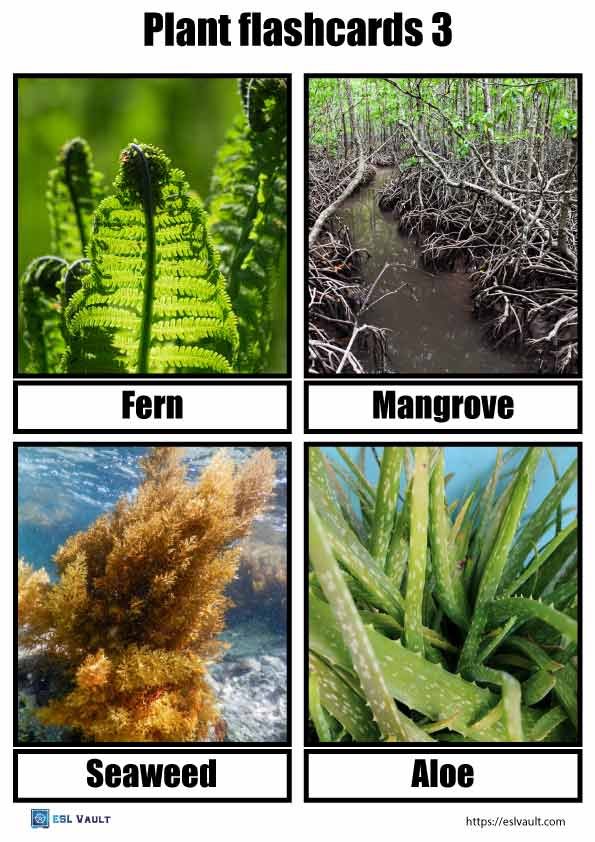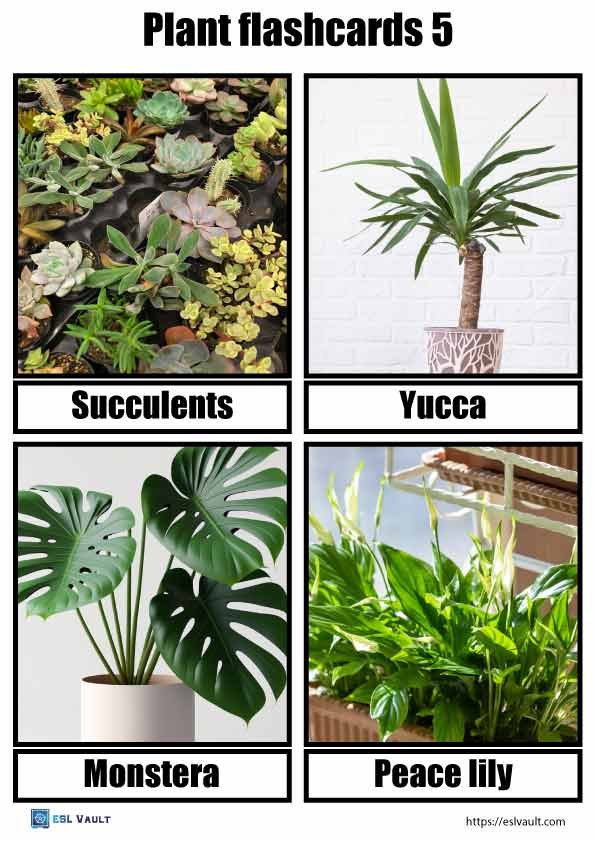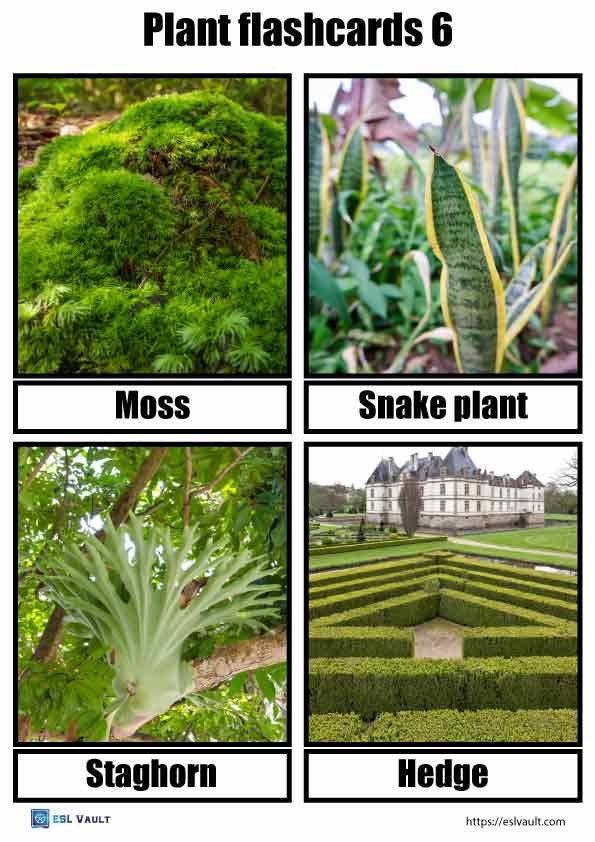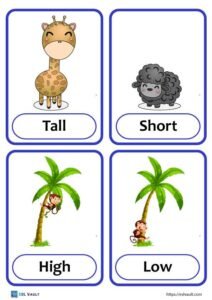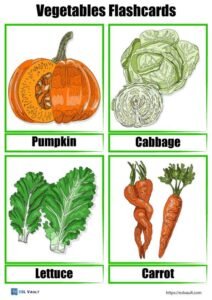Plant flashcards
Here we have some beautiful free flashcards that have real pictures and words. They are perfect for teaching plant vocabulary to children and ESL learners.
You can use these plant flashcards for rote teaching and to play fun games. You will find some suggested activities further down the page.
Parts of a plant flashcards
The first free printable flashcards above and below show basic plant parts. The 16 picture and word cards here have –
Sheet 1 – soil, seeds, sprout, and roots.
Sheet 2 – seedling, stem, leaf, and frond.
Sheet 3 – bud, flower, petals, and fruit.
Sheet 4 – tree root, tree trunk,branch, and bark.
Assorted plants flashcards
The next 28 flashcards feature assorted kinds of plants and trees. It is a basic collection that can help get learning minds interested in botany and nature in general.
A quick online search shows that there are nearly 400,000 species of plants on Earth with more being discovered (and becoming extinct) each year. Making flashcards for all of them would take a lifetime so just a few common plants have been included.
Note that there are no flowers here. There is another page here on ESL Vault that has 32 free flower flashcards if that is what you are looking for.
The plant flashcards below feature these pictures and words –
Sheet 1 – palm, grass, cactus, bamboo.
Sheet 2 – bonsai, thistle, reeds, lily pads.
Sheet 3 – fern, mangrove, seaweed, aloe.
Sheet 4 – Venus flytrap, ivy, pitcher plant, mushrooms.
Sheet 5 – succulents, yucca, monstera, peace lily.
Sheet 6 – moss, snake plant, staghorn, hedge.
Sheet 7 – baobab, oak, giant redwood, red maple.
Ideas for using the flashcards
Besides using these cards to play your favorite flashcard games, here are a few more ideas that you can try –
Matching. Cut the word from the bottom of the cards and ask learners to match them with the correct pictures.
Memory. Print 2 sets of the cards that you want to teach and play a memory game by turning them upside down.
Arranging. Get students to arrange the cards in different ways such as in alphabetical order, indoor/garden plants and forest plants, from biggest to smallest, or in color groups.
Speaking. Ask students to describe the plants on the cards, which ones they know, where they grow, and what they know about them.
Drawing. As an art project see if students can sketch and color a picture of the plant flashcards that you give them.
Related activities
If you are looking for some more fun related resources you will find plenty here at ESL Vault.
First of all, there are the plant coloring pages that are suitable for both children and adults.
For craft exercises, you may also find the printable tree outline templates quite handy.
For discussion activities, there are conversation questions about flowers and trees.

